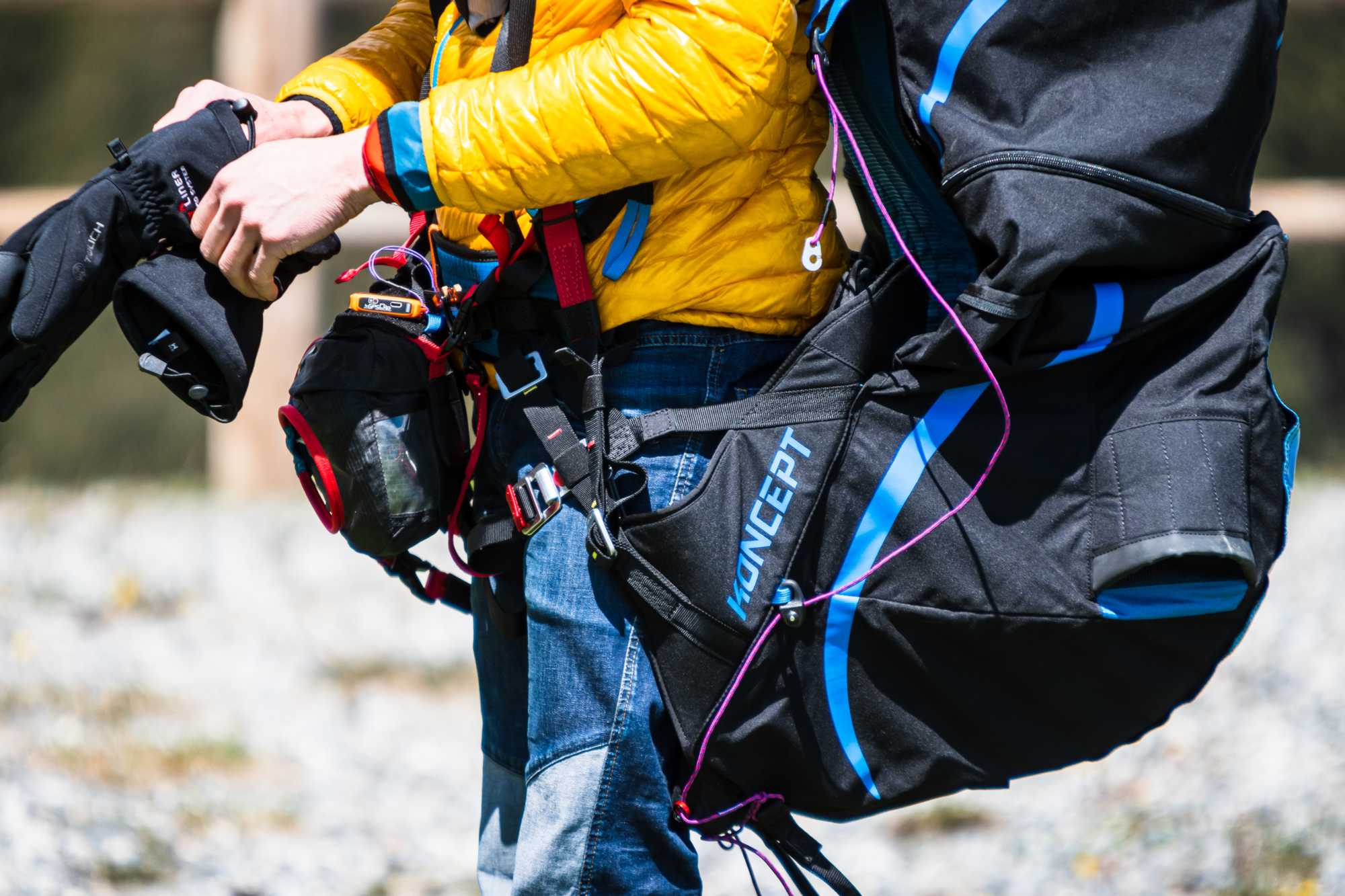
Thoughts about ... back harness protection (Updated Jan. 2024)
Finally, your flight is coming to an end after a record country flight or a simple local flight. You prepare to land, start you final approach and land as smoothly as possible to put a magic touch to this magnificent day.
Well, we all know many landings don't go so smoothly! Poor landing approach, obstacles, strong breeze, wind gradient, turbulence, downwind final, etc ... In these cases, the ground approach can be more complicated, and the landing less smooth. Your legs remain the best shock absorber for a smooth landing, but sometimes this is not possible and the pilot ends up with his buttocks on the ground.
Manufacturers have long tried to equip their harnesses with so-called "passive" protections, whose purpose is to absorb (instead of the pilot) the possible impact on contact with the ground, and to disperse this energy to limit potential injuries. The notion of "passive" safety is important, because it requires no direct action, as opposed to the so-called "active" safety which directly involves the pilot through his choices, gestures and adaptation to the situation, etc....
These protections can be of different types, and each has pros and cons (as always!).
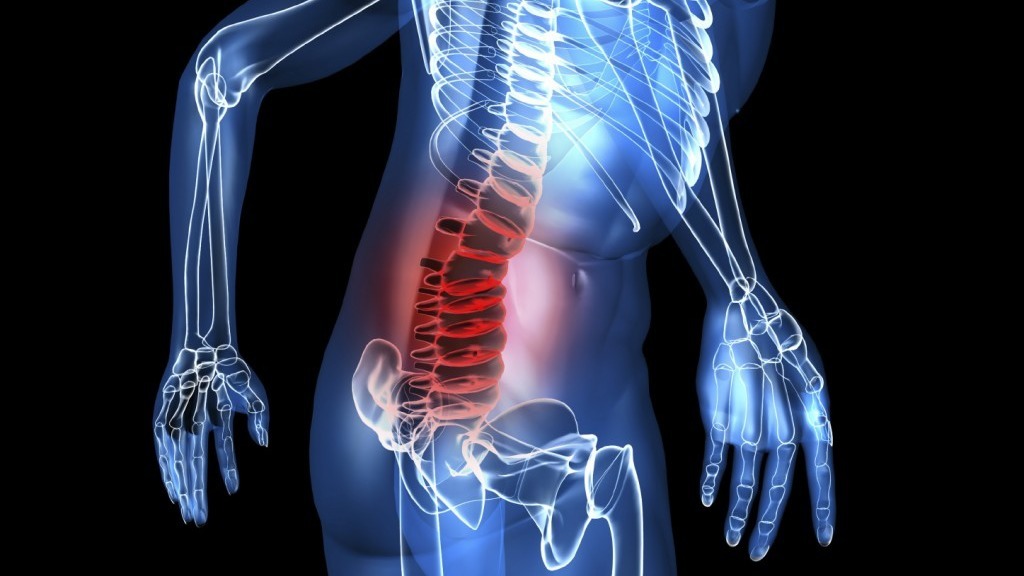
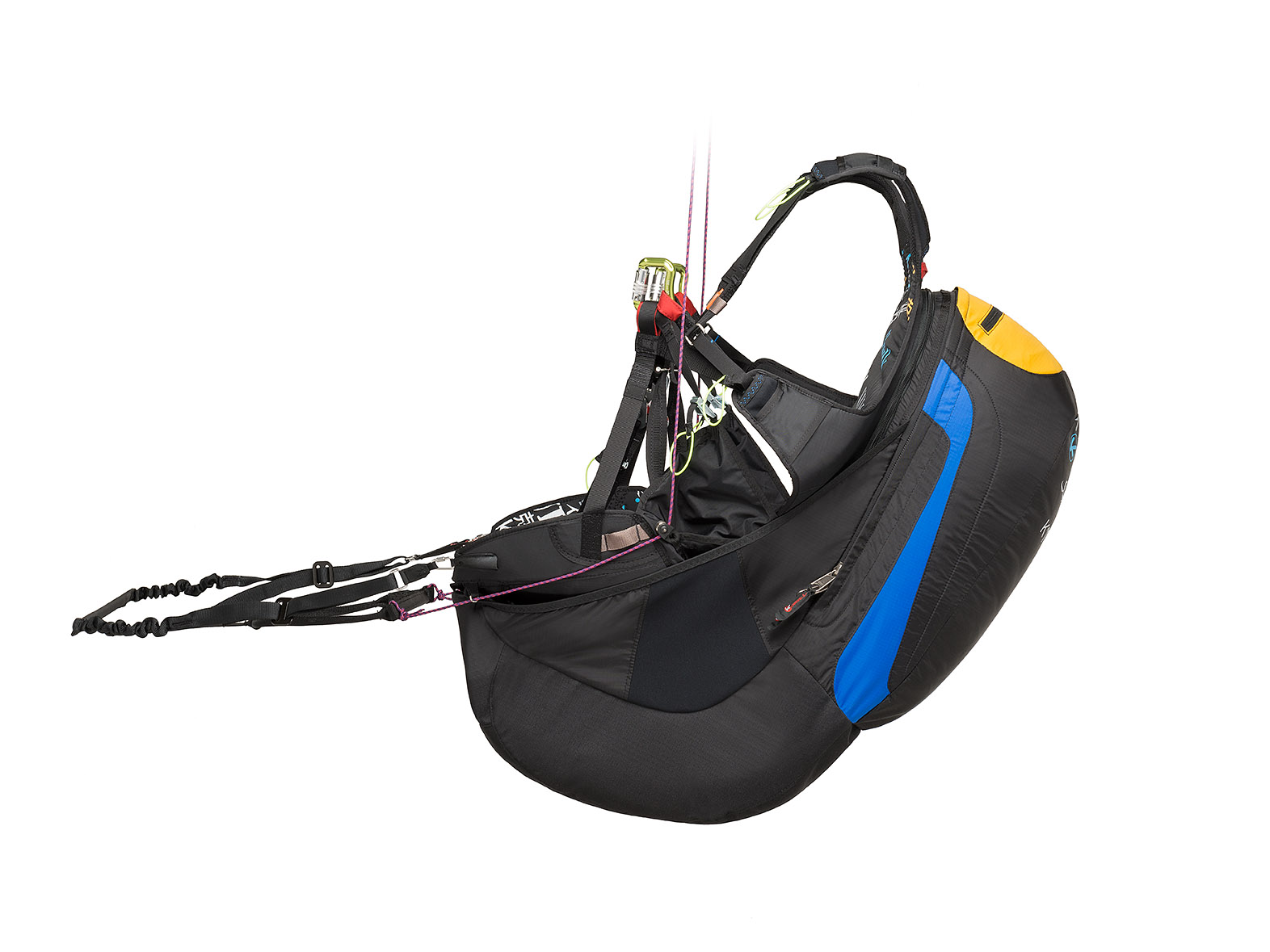
The "foam bag" type protection, is composed of one or more foam cores, wrapped in a fabric cover. Thickness, shape and density may vary. The foam contained within the fabric consists of cells of trapped air. In the event of an impact, this foam will compress and the air contained in its cells will be expelled. This air will try to pass through the fabric of the cover (by porosity) and the seams. The damping effect comes from this resistance for the air to escape, combined with the intrinsic characteristics of the foam (density) which also has a shock absorbing effect. Due to the almost constant volume of the foams, the thicknesses are usually just sufficient to provide correct damping. The greater the foam thickness, the more effective the protection. It seems to be established that for a "classic" foam bag, a thickness of less than 15-17cm is no longer a worthy protection.
The quality of a "foam bag" protection comes from :
- The quality of the foam
- Thickness of foam
- The partitioning of the foam cores
- The quality of the fabric used for the covers
- Leakage control (flow and velocity)
After an impact, the foam bag must be able to recover its initial characteristics (shape, condition of the cover), otherwise it will certainly not be able to guarantee an acceptable level of absorption during a subsequent impact.
The principle of the airbag is the same: a volume of trapped air, which will try to escape after a shock. Airbags are normally inflated using the relative wind generated during the flight. The air penetrates inside the chamber with a system of scoops (different solutions exist: lateral, frontal) and valves trapping the air inside. The damping principle remains the same as for the foam bag: progressively evacuate the air contained in the chamber to obtain a damping effect. During an impact, it takes a certain amount of time for the chamber to "pressurise" (the air is compressible) and begin to play its role as a shock absorber by expelling the air through the various existing leaks (porosity of the fabric, seams, valve system).
Airbags are generally larger than foam bags because they take up less space when folded. This possibility of having larger inflated volumes gives airbags better damping characteristics than foam bags.
Similarly to foam bags, the intrinsic quality of an airbag comes from :
- Its thickness
- Its shape, varying the speed of the pressurization
- Leakage control (flow and speed)
- The performance of its scoops (position and shape)
- The quality of the envelope fabric
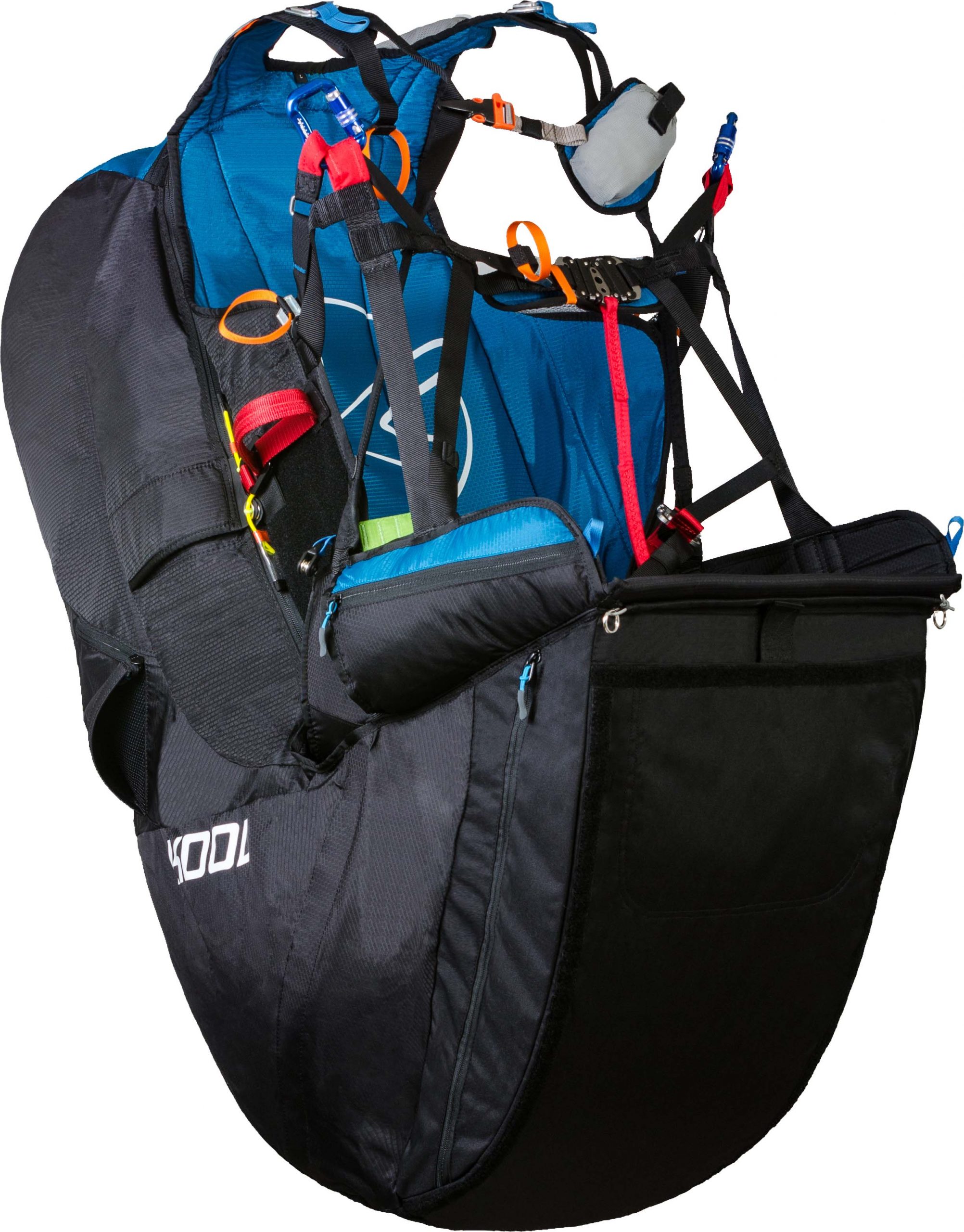
DEFORMATION FOAM :
Deformation foam, unlike traditional bag foam, does not work on the principle of a trapped volume of air that absorbs energy by compressing.
This type of protection is made up of "harder" elements that will deform under the effect of impact. We're talking here about mechanical deformation, just as in modern vehicle bumpers, which absorb energy by gradually crumpling.
This technical solution makes it possible to reduce the thickness of the protection, with good results in the standard tests. In tests carried out on a prototype, the results were better than with a 45% thicker foam bag.
On the other hand, tests carried out for low-level falls were significantly worse than for airbags or foam bags. This type of protection requires a minimum amount of energy before it starts to deform, and will therefore not be very effective on low impacts. Be careful in this respect.
The quality of a "mechanical deformation" type of protection depends on:
- the type of deformable mechanical elements
- their shape and material
- their number and arrangement
After an impact, this type of protection is damaged and cannot be considered operational in the event of a new impact. It is therefore imperative to check them regularly for any degradation that could prevent the protection from functioning properly.
To avoid making protections totally "disposable", manufacturers generally integrate this aspect into their design and ensure that only damaged modules can be replaced.
INFLATABLE PROTECTION :
Unlike an airbag, which compresses the trapped air and lets the pressure escape through controlled leaks, inflatable protection is airtight. When pressure increases on impact, the entire structure of the bag deforms elastically to provide sufficient volume for the compressed air, without allowing it to escape.
Its behavior is similar to that of a foam bag, although it is much more effective in terms of the normative test (165cm).
This type of protection is more effective than a foam bag of equivalent thickness, and like it, has no tendency to shift to the side on off-axis impacts. From the airbag, it recovers the compactness of storage once emptied.
The quality of an inflatable protection comes from:
- its thickness
- the elasticity and watertightness of the pouch
Inflatable protection is designed to be reusable, but it's important to check that it hasn't been punctured, as this would render it unfit for future impacts.
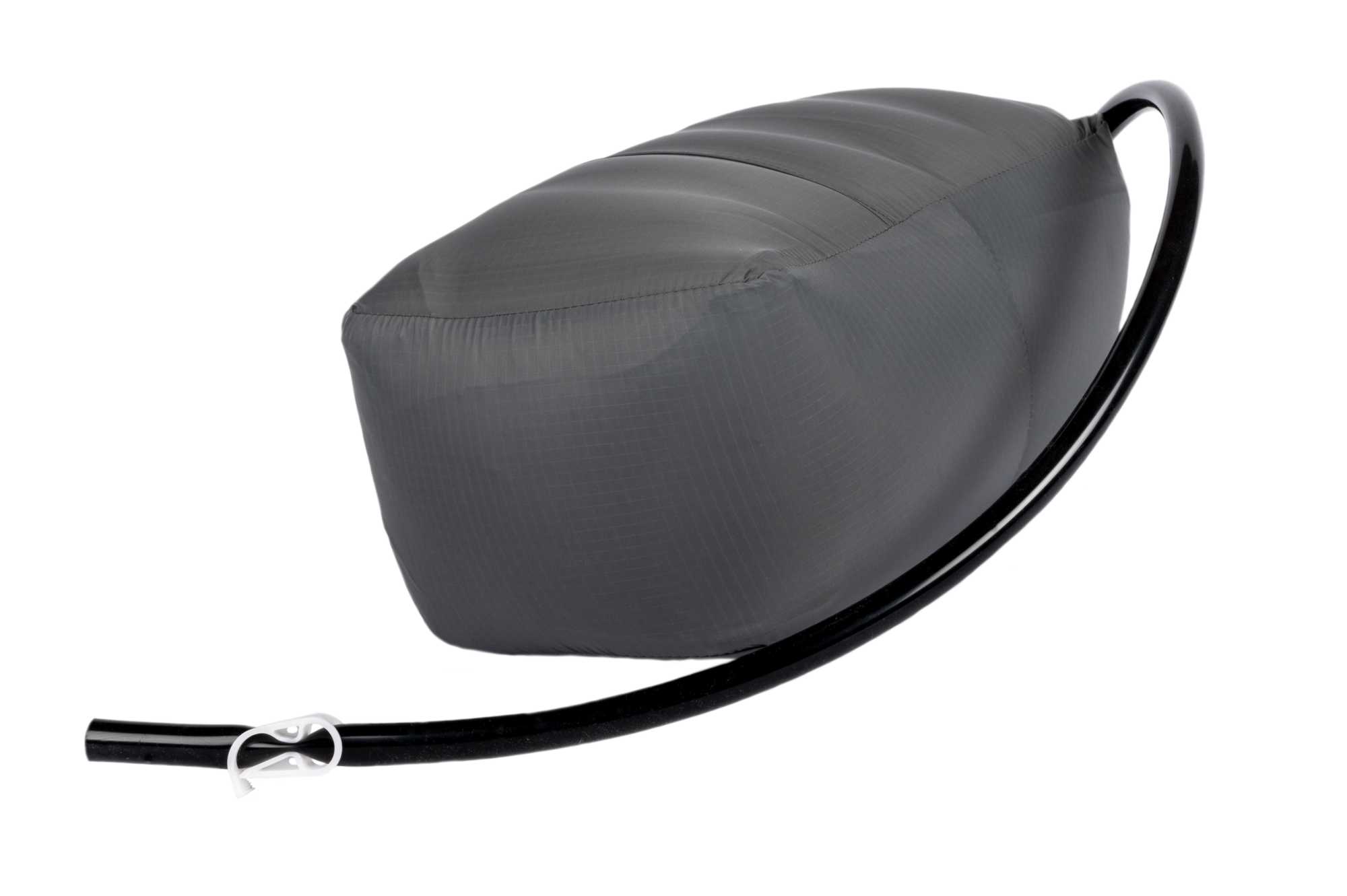
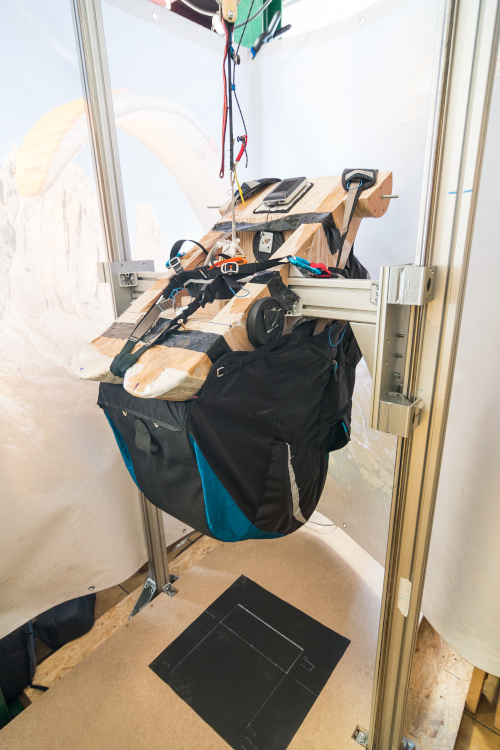
To test the protections and deduce their effectiveness, it was necessary to determine a repeatable protocol that would be representative of a real situation. It was therefore decided at the time, that the test should correspond to the arrival on the ground under emergency parachute at 5.5m/s (about 20km/h).
The certification standards for harnesses therefore incorporate this test for back protection, making it possible to determine whether the level of shock absorption can be considered acceptable compared to what the human body can withstand without causing significant injury.
Le test effectué consiste en une chute verticale à une hauteur donnée (1m65), protection en place sur un mannequin de 50kg en position assise. Le dispositif enregistre l’énergie absorbée (en g) par la protection, ce qui correspond à l’impact encaissée par le pilote. Cet impact doit se situer au-dessous d’une valeur limite (50 g), et doit également avoir une durée limitée lorsqu’il dépasse certains seuils (<7ms si >38g / <25ms si >20g).
This measurement makes it thus possible to compare different types of back protection in terms of "pure" shock absorption.
NOTE: There is also a mandatory CE certification in France since 2017 to market back protectors (level 2 PPE), removable or not.
WARNING: this certification test represents only one case corresponding to an arrival on the ground under a reserve parachute! It should not be considered a guarantee that the protection will be effective in all situations. The result of this test represents a small aspect of what your passive protection may be able to withstand: sideways impacts, slipping, on the back, ...
It is rare that in a real situation the pilot falls perfectly vertically on the protection. You could fall from higher, sideways, with a horizontal speed, ... The possibilities are endless.
An airbag is often more effective than a foam bag in the event of a vertical fall, but it may "slip aside" in the event of an off-axis impact. A foam bag is heavier and more cumbersome, but often stays in place during this type of impact. An airbag will also be more sensitive to repeated impacts since it is directly subjected to friction and other aggressions. A foam bag is placed inside the harness, and therefore remains more protected from this type of problem. It has a longer lifespan and is easy to replace, unlike the airbag, which is often an integral part of the harness. It is therefore important to be aware of the advantages and disadvantages of each type of protection when choosing your harness.
It is also important to take into account the area of protection coverage. As the test is only carried out for a sitting position in a perfectly vertical fall, what happens if the pilot is in a prone position, or falls backwards on impact (in case of a stall close to the ground for example)?
Let's take the theoretical situation of the test: a perfectly vertical fall from a seated position. In reality the pilot is slightly inclined (even in the seated position). At impact, the centre of gravity is shifted backwards in relation to the axis of the fall, the pilot will go backwards and hit the ground with his back as well. It is not possible to simulate this during the test, because the dummy is mounted on rails that keep it vertical no matter what happens.
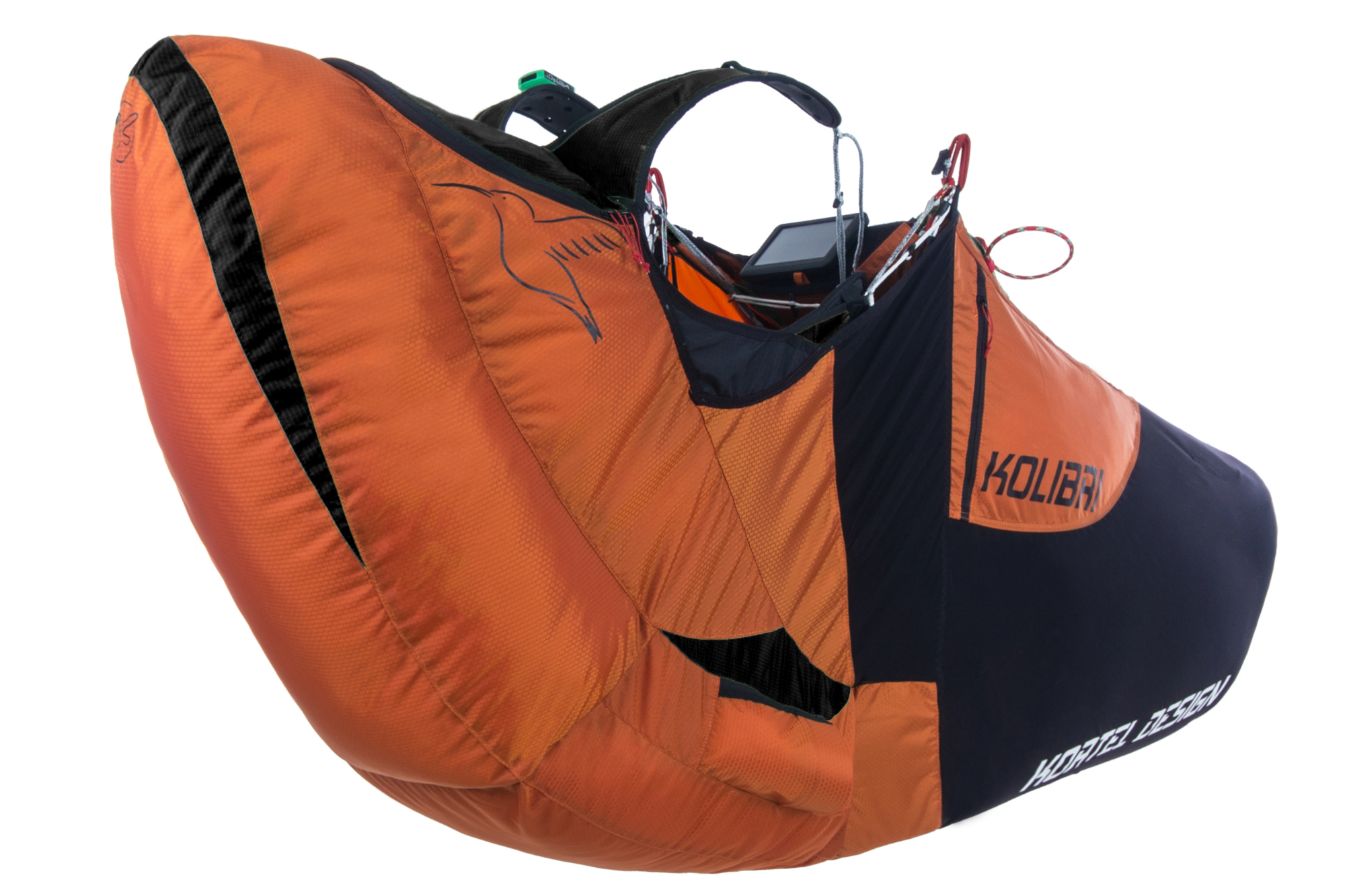
The manufacturer is therefore free to design the protection of his choice, as long as it is effective enough to pass the test.
So you'll see some ads boasting a lot about protection:
- Optimum passive safety
- Extremely high performance protection in its class
- Best LTF homologation test results
- Full protection from thighs to upper back
- Full back protection
- ...
Be careful however to analyze what is really behind ...
- "Extremely high performance protection": The results of the certifications tests may be within the limit, yes, but by how much? If we find ourselves in the 40-50G range, we can see that we have passed the limit!
- "Integral protection": Since it has not been tested in the back, does the protection in this area seem satisfactory? what thickness? what system (airbag or foam bag)? what volume? Some manufacturers advertise a full back protection, but with only 4-5 cm of foam in the back area we have the right to doubt it...
- "In case of a fall on my back, is there only the protection between the ground and my back? Some positioning of the rescue parachute at the lumbar level can be a question in case of impact...
- ...
CONCLUSION:
As you've understood, the result of the certification test is an element to be taken into account in your choice, but it is not sufficient.
It is up to you as a pilot to carefully compare the available solutions based on :
- Your flight expectations (hike&fly, competition, cross-country, acrobatics, etc ...)
- Your level and experience. A beginner may potentially need back protection more often.
If you have any questions about the back protection of a particular harness, contact the manufacturer for details!
It is often said that "the best rescue parachute is the one you don't have to use", well it's a bit the same thing for back protection. But just like the parachute, it is important that the back protection be effective if you ever have to use it.
HAPPY FLYING!
